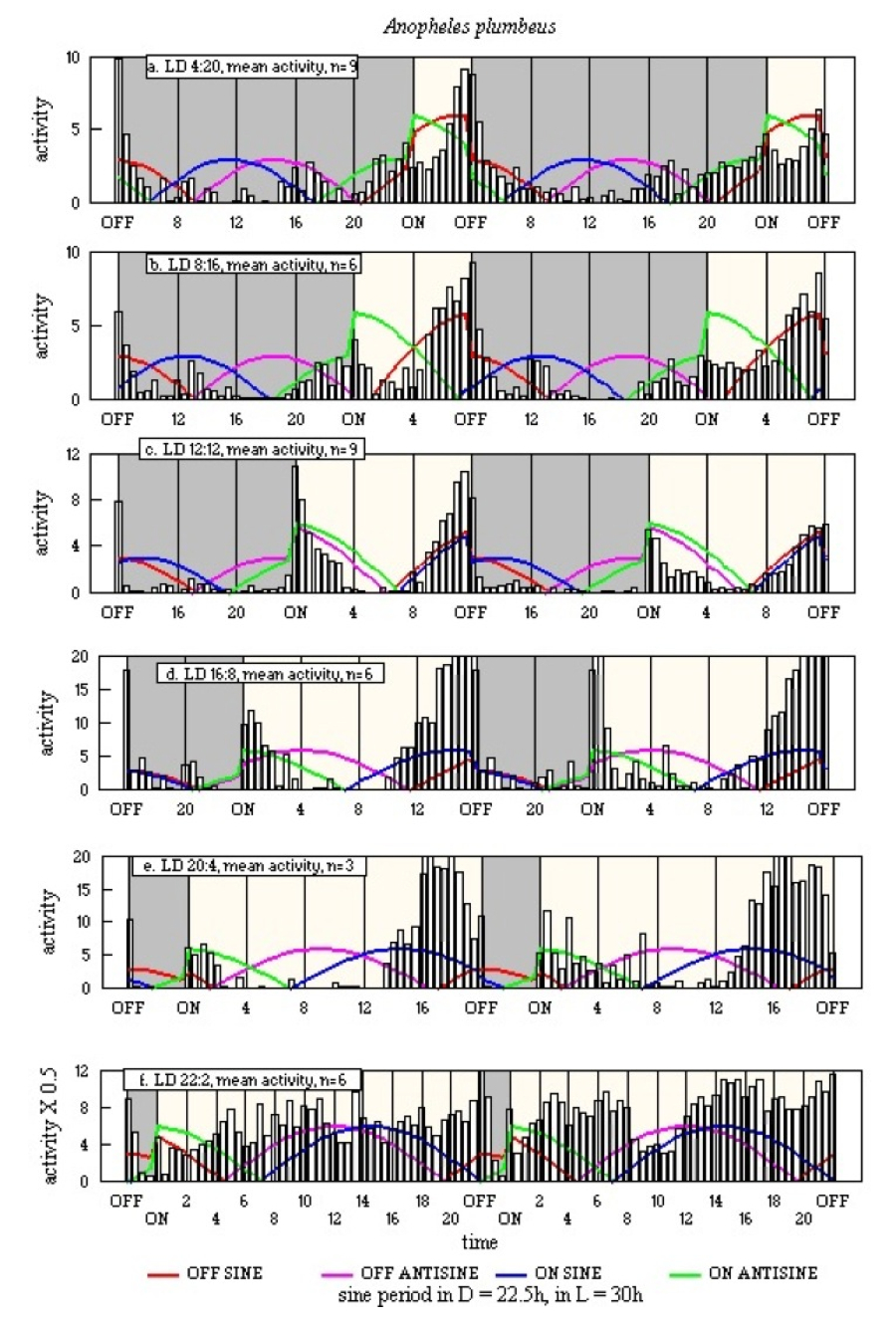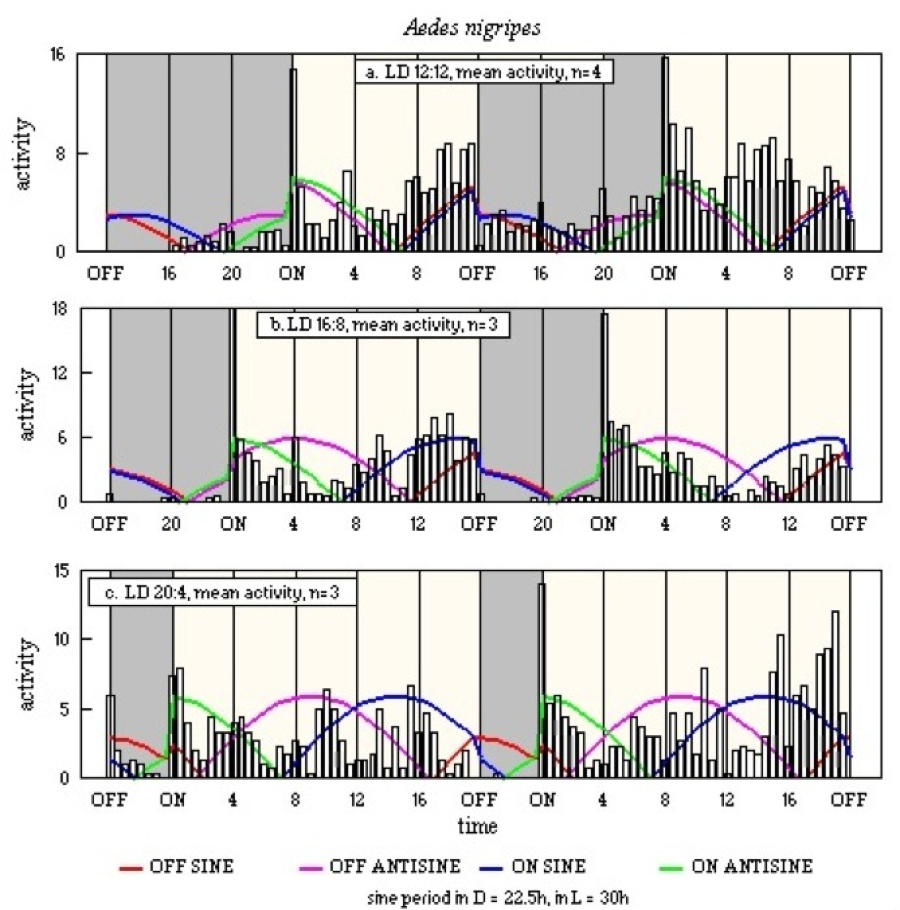

Biological Clocks in Mosquitoes - Section 2
|
Anopheles plumbeus. This is a species of northern Europe, natural range 35-58°N, maximum L = 18h. Following the interpretation now arising from the Cx. p. molestus results, the activity histograms for An. plumbeus given in the Appendix are redrawn in Figure 38, with the four hypothetical sine waves superimposed and assuming Lt = 30h and Dt = 22.5h. This is an assumption as there have been no studies of the species in constant light or dark.
Figure 38

Not only does the maximum activity occur when the two pairs of SINE and ANTISINE waves in near coincidence (Figures 38c and 38d) but each of the small peaks of activity in otherwise inexplicable positions have a matching high point in a sine wave. For instance, the peak in D at around 16h, and the pre-light-on rise in LD 4:20 (Figure 38a); and, the peak in D at around 8h, and the pre-light-on rise in LD 8:16 (Figure 38b).
(b) Fully day-active species
Aedes impiger and Aedes nigripes. The activity histograms for these two high latitude species are shown in Figure 39 and Figure 40 respectively. The sine waves are plotted with Lt = 30h and Dt = 22.5h.
Figure 39

Figure 40

There is a reasonable match between the observed and hypothetical peaks with both species, especially in the LD 20:4 regimes (that is the Summer LD where the study populations originated, 65°N). It shows also that the upsurge previously attributed principally to the midday higher temperatures (Corbet 1966) can be explained by circadian control.
|
©1998, 2010 - Brian Taylor CBiol FSB FRES 11, Grazingfield, Wilford, Nottingham, NG11 7FN, U.K. Comments to dr.b.taylor@ntlworld.com |